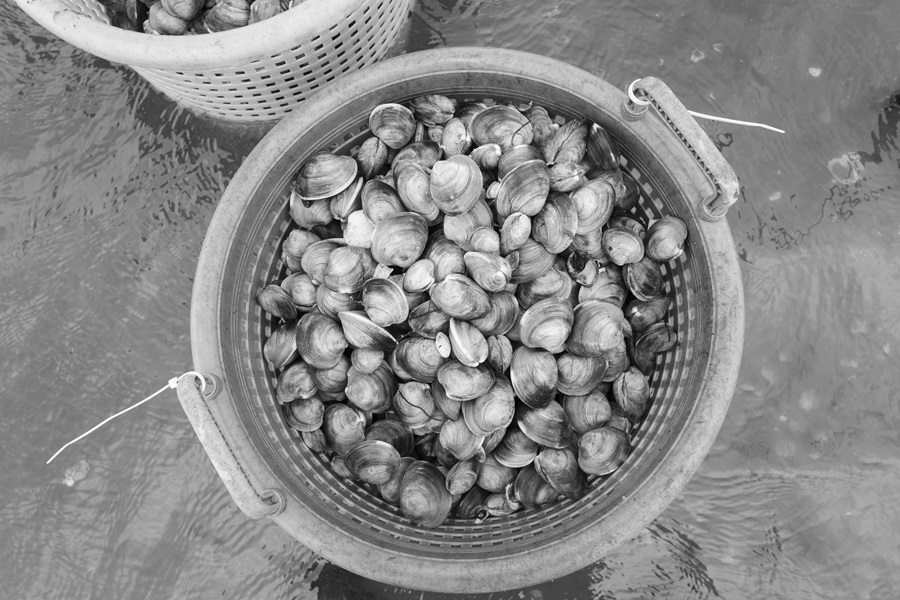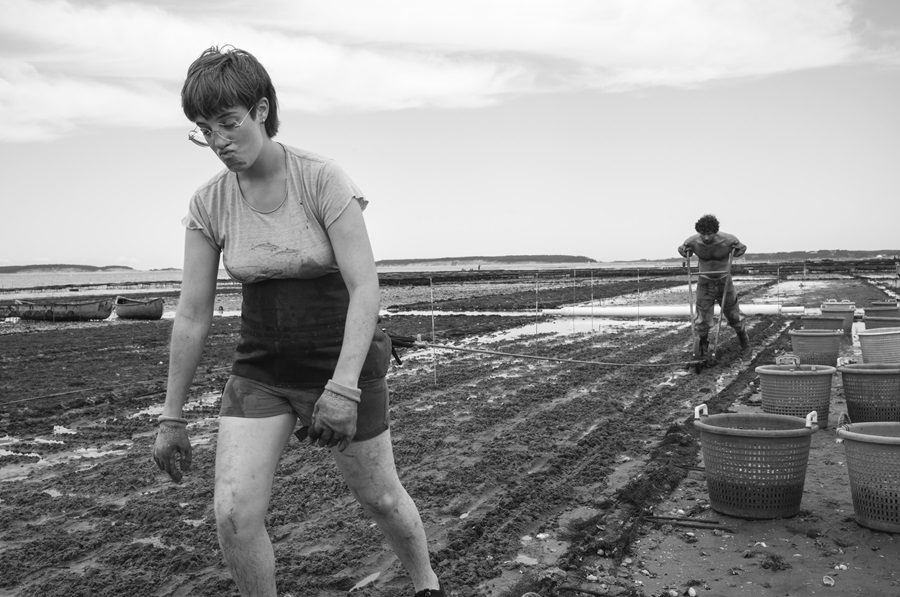
For most clam lovers, the labor involved in enjoying the bivalves is about as rigorous as scooping them baked and stuffed out of their shells, or perhaps balancing them, along with twirled pasta, on the end of a fork.

But there’s a lot more to it for the growers who make those mouthwatering dishes possible. There are beds to prepare, troughs to dig, seeds to spread, and nets that have to be carefully staked down to deter crabs and other predators eager to get to those clams before you do.
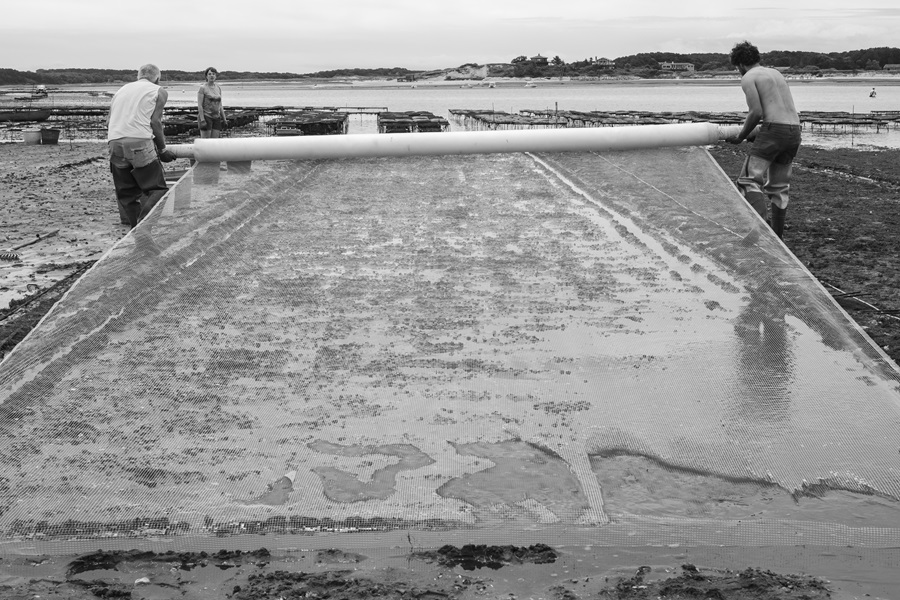
Wellfleet shellfisherman Jim O’Connell and crewmembers Jimmy Mulpeter (Jim’s nephew) and Clementine Malicoat Valtz were doing just that in mid-June at Jim’s grant on Field Point, just off Fox Island. They hauled 42 buckets containing 150,000 seed clams out to the grant, plowed four-inch-deep troughs into the wet sand to secure protective netting, spread the 30-millimeter seed over 100-foot-long runs, then covered the runs with polypropylene netting, fixing the borders with rebar, tucking the edges of the netting into the troughs.
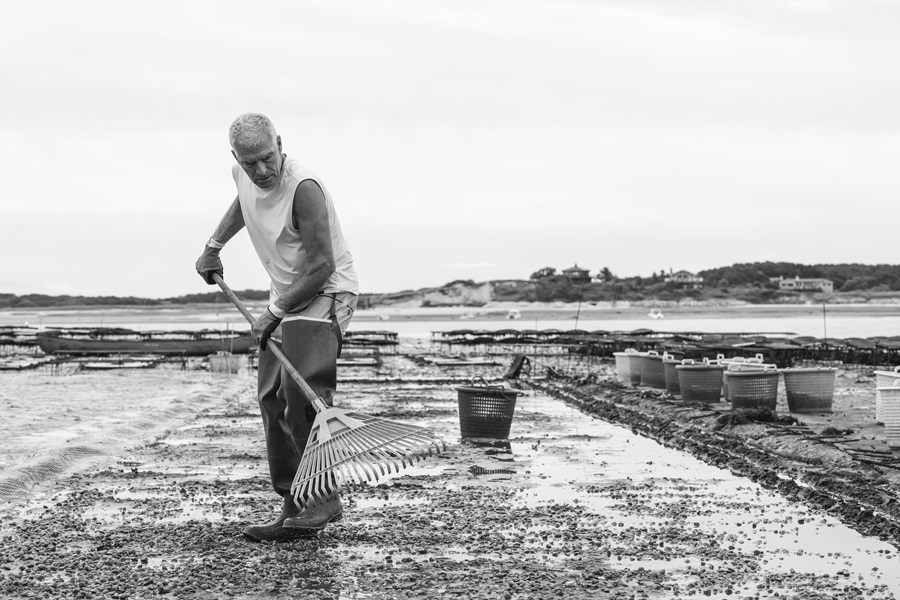
After that, the clams do the work, burrowing into the sand and feeding on phytoplankton and zooplankton. In another two years, those that make it — 50 percent on average — will be ready for market.
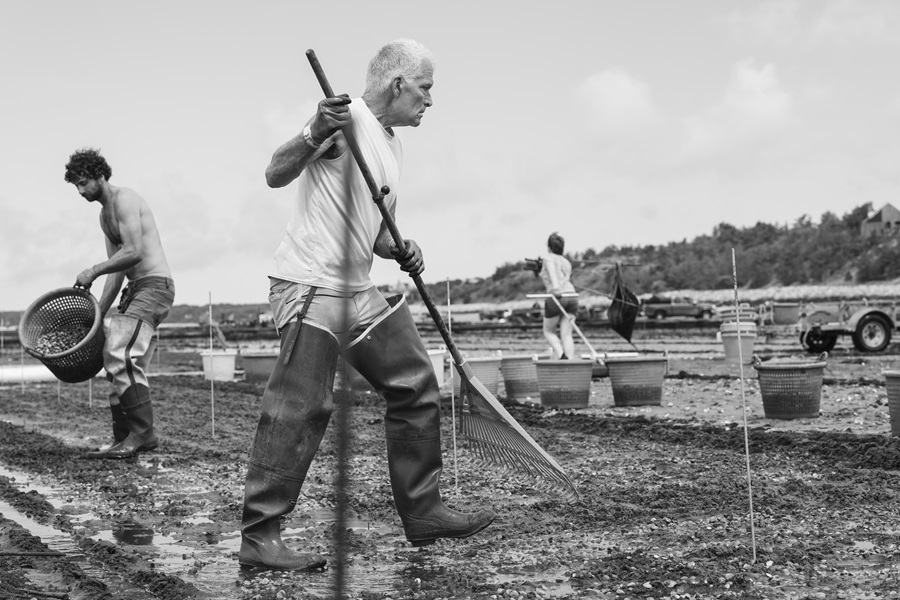
According to Mulpeter, who has a master’s degree in marine biology, this is the best time of year to put down seed, whether directly onto the sand or, in the case of smaller seed, into nursery trays. The hatcheries are typically well stocked, and the sooner a farmer gets his seed in the water, the sooner the clams can start growing.

Almost all the clams farmed in Wellfleet are quahogs, also called littlenecks when they measure 1½ to 2 inches in diameter, cherrystones at 3 to 4 inches across, and chowder clams when they’re over 4 inches. Farm-raised quahogs that are 7/8 of an inch across can be sold in Massachusetts for distribution out of state; in state, the minimum size is one inch.
